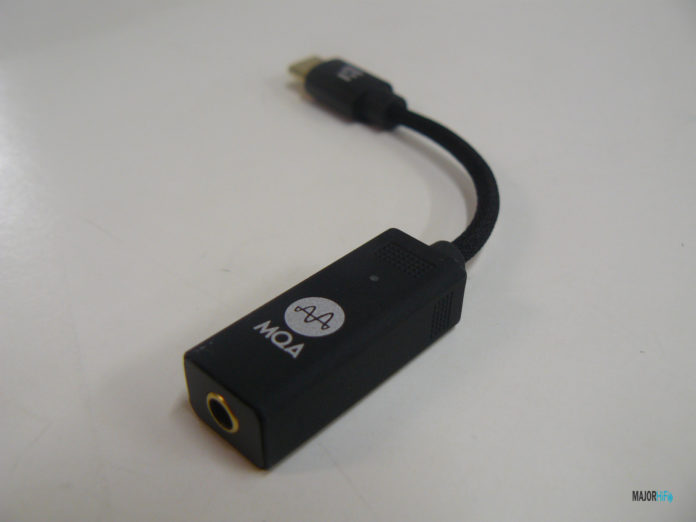Some DACs can be big and bulky and others can be small and portable. Whether you’re looking for something that’ll look good on your desk or something you can bring on your commutes may prove to be a difficult decision, but HELM audio is looking to deliver a product that can do both. The Bolt DAC/AMP is an MQA certified USB device specifically made for mobile devices. If you own a nice pair of headphones or IEMs, you might be clamoring to use them in a more mobile setting. Can the Bolt accomplish a high-fidelity sound in a more free environment?
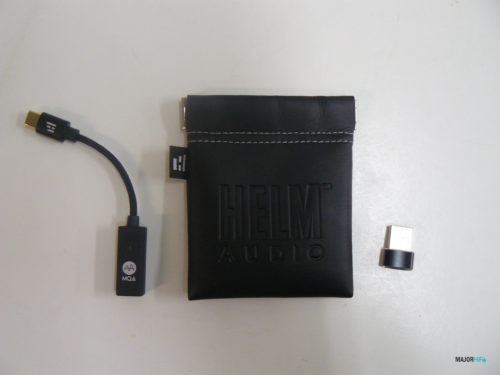
What You Get
The packaging is clean and simple. The Bolt is itself an accessory so there are not many other contents supplied here. You do receive a nice pleather pouch to store the DAC, and maybe a pair of IEMs too, as well as a short manual with a spec sheet and USB adapter.
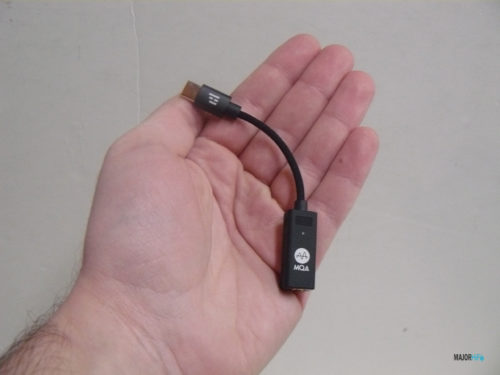
Build
The structure of the Bolt resembles that of a 3.5mm adapter for a modern smartphone. It uses USB Type C to connect to Android devices and laptops. HELM also gives you a USB adapter if you’re using a device that doesn’t support that input method. Unfortunately, this means that iPhones will need another peripheral that connects USB Type C to lightning for the Bolt to be accessible with it. Speaking of iPhones, the Bolt is no longer in width than your standard 3.5mm to a lightning connector, being approximately 95mm in length.
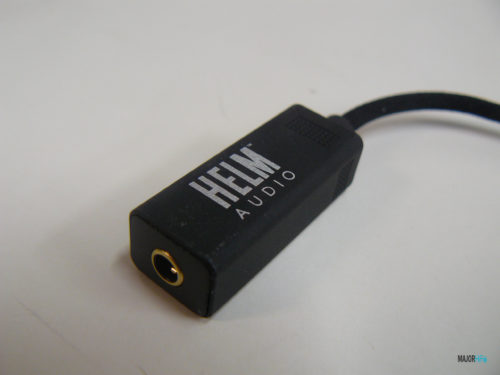
Design
What Makes the Bolt a DAC/AMP is the chassis sported on the headphone input. This rectangular black box holds the components of the device that gives this normal-looking dongle a big upgrade. One of the main attractions is MQA support, which when connected to a service like Tidal can present the detail your music was always meant to communicate. Of course, it helps to pair it with a great headphone, but the Bolt will help make its strength more easily recognizable. If you don’t use a service that supports MQA, you can still do your headphones or IEMs justice by using other high-resolution formats supported by the Bolt. Containers like FLAC, AIFF, and WAV can be fully reproduced using the Bolt. Even Apple Music or Spotify will relieve a solid enhancement with PCM files that include sampling rates up to 385kHz, or DSD files up to 5.6 MHz.
On the Bolt itself, you’ll see a small LED light that will indicate which resolution you’re currently streaming at. Magenta indicates MQA, red for sampling rates greater than 48kHz, and blue for sampling rates less than 48kHz. Being colorblind I couldn’t really make out the difference between blue and magenta, but that won’t really be a problem for most people.
What brings this DAC/AMP to the major leagues is its THX certification. This means that the Bolt features ultra-low harmonic crosstalk and crossover distortion. It also physically isolates the DAC from the USB to achieve even better performance. Lastly, the Bolt uses three oscillators for high-caliber frequency lock, meaning a stronger reference signal flow.
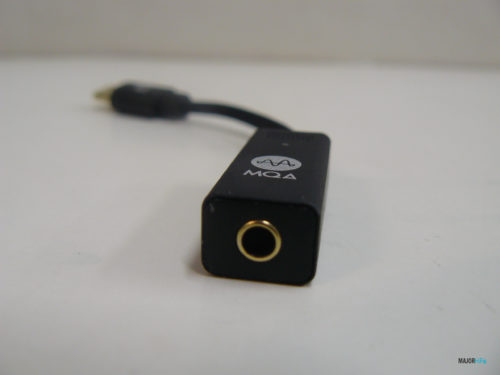
Output
The AMP side of the Bolt has some quirks that have their preferences but doesn’t keep you from enjoying it with any headphone or IEM. The impedance of your chosen set will be matched to the Bolt’s as long as it’s less than 150 Ohms at 1V. Models at 2V need to be greater than or equal to those 150 Ohms. Most IEMs I used measured a comfortable signal. It’s really only the sensitive planars that might give you a little too much gain. I used mostly IEMs for this review, using the Bolt through my desktop computer. I used Tidal MQA for my listening sessions, where the Bolt matched my system giving me a lot of control.
The main units I used for this review were the Queen of Audio Vesper, Kinera Baldr, and the Sivga Pheonix.
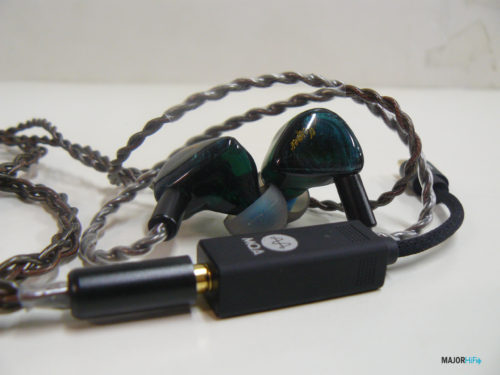
I wanted to start off with something small and affordable. The Vesper from Queen of Audio at its best can reach the detail of a much more expensive IEM, and I was interested to see what the Bolt could bring out of it. First there’s the soundstage, which I didn’t remember having this much spatiality. Vocals and other instrumentations are granted a significant amount of top end and bottom end to the image, and appear to be more floaty. Originally the treble lacked width, and the bolt properly expands the highs for a more full response. Bass is just as smooth, and obtain a stronger depth than before. It showcases a wider variety of instruments and effects that a lot more recessed without the Bolt.
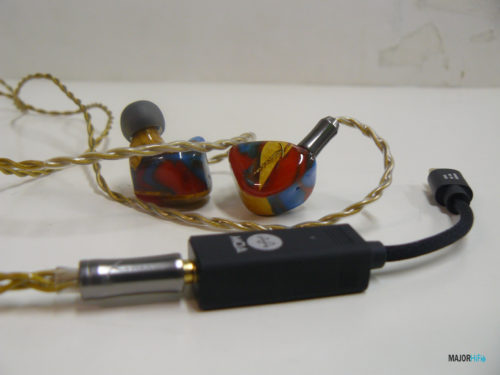
This is currently one of my favorite IEMs with its clean and crisp response and excellent soundstage. So what does an great DAC/AMP like the Bolt have to offer to this prestigious IEM? The answer is more details, more resolution, and more immersion. What the Bolt does is it gives and already immaculate stereo image a more solidified appearance. It might not sound all that appealing, but the much tighter response created a more articulate sound field while still keeping its width and dimension. The vocal definition in the mids couldn’t be more crisp if it tried. They’re just so full, clean and offer up so much detail for an IEM that the right emotive vocalist can sound staggering compared to the Bladr without the Bolt.
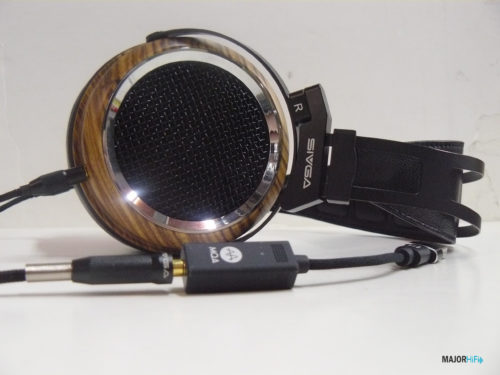
Not the ideal headphone for on the go listening, but I couldn’t help myself here. Plus, I wanted to see what the Bolt could bring to an open-back headphone. It is possible to plug in the Bolt via USB to your gaming console, or if you primarily use your PC or Mac to listen to your music. The Phoenix is one of the more notable open-back headphones to come out this year and was excited to hear what I could get with the Bolt. What I heard from this pairing was phenomenal. Especially in classical tracks, which shows off all of the incredible natural characteristics the headphones are strong with. Bass response is so much smoother here, and the placement, that much more impactful. The expression of the mid-tones is made with even more alluring textures and artifacts that all add to the character of this sound signature. I felt the most immediate difference pairing the Bolt with the SIVGA Phoenix, and I’m so happy with how great it sounds.
Summary
The Bolt is only $99.99, and it is absolutely a must buy with any of your major headphone or IEM purchases. This is a small, simple, easy to use DAC, and if your wan’t to really enhance your audio at home or one the go without wanting to throw money at a higher-end system, the Bolt is a perfect device. The Bolt makes all your music feel natural and more detailed through significant improvements in imaging and resolution. Using the Bolt for MQA is a must, but it will also make all of your streaming track sound a whole lot better. For the price, it’s one hell of a value, and is a great jumping off point to try more DAC/AMPs in the future. I can’t wait to try it with more pairings.
Pros and Cons
Pros: Portability, resolution, MQA, build, detail retrieval
Cons: Needs extra adapters for IPhones
The HELM Audio Bolt is available on Amazon, or from their website.
MAJORHIFI may get a commission from retail offers.
MAJORHIFI may receive commissions from retail offers.


